Ancient Greek theatre, which thrived from around 550 BCE to 220 BCE, lay the foundations for theatre in the western world. Greek theatre may be traced to the festival of Dionysia in Athens, which was the cultural center of Ancient Greece. The theatrical genres of tragedy, comedy and satyr all emerged at this festival. The foremost of these three genres was the Greek tragedy, which went on to hugely influence the theatre of Ancient Rome and the Renaissance. There were many influential Greek playwrights. Out of these Aeschylus and Aristophanes are generally considered as the fathers of Greek tragedy and comedy respectively. The popularity and impact of Greek theatre may be gauged from the fact that many ancient Greek plays are still performed in theatres all over the world. Know more about the theatre of ancient Greece through these 10 interesting facts.
#1 WESTERN THEATRE ORIGINATED AT AN ANCIENT GREEK FESTIVAL CALLED DIONYSIA
The origin of theatre in Ancient Greece may be traced to a large festival in Athens known as Dionysia. This festival was held in honor of Dionysus, the Greek god of grape-harvest, wine and fertility. It was the second most important festival in Ancient Greece after Panathenaia, in which games were held. Dionysia consisted of two related festivals, the Rural Dionysia and the City Dionysia. The Rural Dionysia was held in winter and its central event was the pompe procession. The City Dionysia was held in the months of March and April, most probably to celebrate the end of winter and the harvesting of the year’s crops. The central event in City Dionysia were dramatic performances. The genres of tragedy, comedy and satyr are all said to have developed at this festival. Thus modern western theatre may be traced to theatre in ancient Greece.
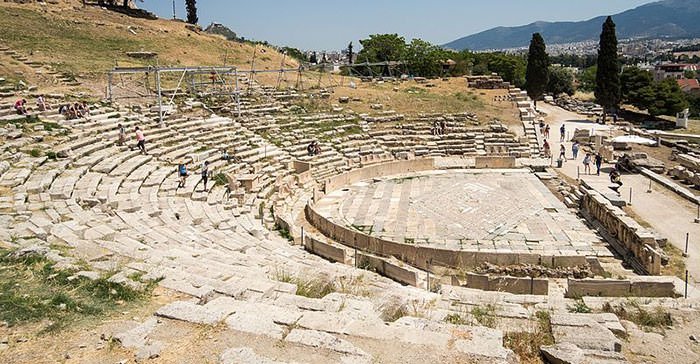
#2 GREEK TRAGEDY WENT ON TO HUGELY INFLUENCE WESTERN THEATRE
Tragedy, a genre which focuses on human suffering, was the most appreciated theatrical form in ancient Greece. The first performance of tragedy at the Dionysia is attributed to the playwright and actor Thespis. He is said to have received as a prize a goat. The word “tragedy”, which means “goat song” in classical Greek, is possibly derived from the prize that Thespis received. Moreover, the word thespian is used even today to refer to a theatre artist. Greek tragedy hugely influenced the theatre of Ancient Rome and the Renaissance to the extent that it is said to have played a historically important role in the self-definition of Western civilization. Apart from tragedy, other principal dramatic forms in Greek theatre were comedy, a performance which pitted two groups against each other in an amusing conflict; and satyr, a play based on Greek mythology which was rife with mock drunkenness, brazen sexuality, pranks, sight gags and general merriment.

#3 THREE PLAYWRIGHTS COMPETED AT DIONYSIA
5th century BCE is regarded as the Golden Age of Greek drama. By this time five days of the festival Dionysia were devoted to theatrical performances. At least three of these days were devoted to tragic plays. There was a competition between three playwrights in which each presented his set of three tragedies and one satyr play on the successive days. Most of the surviving Greek tragedies were performed during the Dionysia. Apart from tragedies, there were was also a competition between five comic writers who presented one play each. Though comedies were secondary in importance and were not held in the same high regard as tragedies, it was a great honor to win the prize for the best comedy in the City Dionysia.
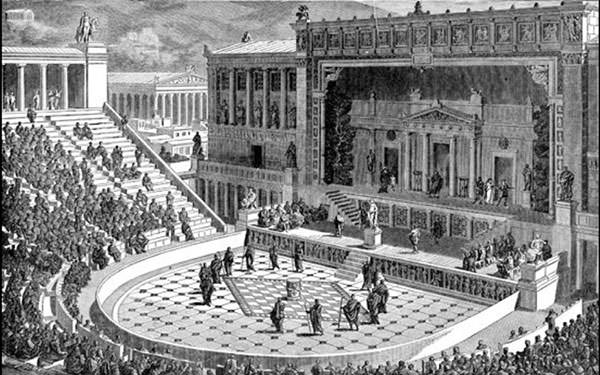
#4 GREEK THEATRE BUILDINGS COMPRISED OF ORCHESTRA, SKENE AND THEATRON
Greek theatre buildings had three main elements: the orchestra, the skene, and the theatron. The orchestra was the area at the center of the theatre where the actual play would take place. It was usually rectangular or circular. The skene was the building located right behind the orchestra. It was used as the backstage where actors would change their Greek theatre costumes and masks. While the skene was originally a temporary structure like a tent or hut, it later became a permanent structure made of stone. On many occasions, the skene was painted and served as the backdrop for the play. The theatron, which means “seeing place”, referred to the seating area from where the audience saw the play. Also, the orchestra was usually situated on a flattened terrace at the foot of a hill so that the slope would produced a natural theatron.
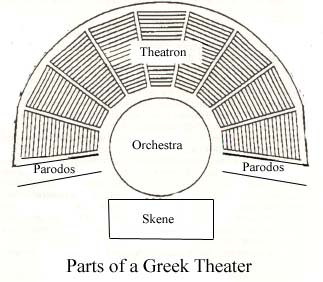
#5 THE FAMOUS DRAMA MASKS MAY BE TRACED TO ANCIENT GREEK THEATRE
The drama masks, that have now come to symbolize theatre, originated in Ancient Greece. The two masks together represent Comedy and Tragedy; the two main genres of Greek theatre. The Comedy mask is known as Thalia, the muse of comedy in Greek mythology while the Tragedy mask is known as Melpomene, the muse of tragedy. Greek theatre masks have been in use since 6th century BCE. Masks were one of the typical features of classical Greek theatre. There was a practical reason for using the masks. The large masks helped exaggerate the emotions of the actors and their facial features. In theatres that accommodated thousands of people, this was a necessity. The actors wore dark masks for tragedies and brightly colored masks during comedies. The masks were made of organic materials due to which there is no surviving physical evidence of Greek theatre masks. Masks were meant both for the actors and the chorus. Since the chorus represented the same character, they all wore the same mask.
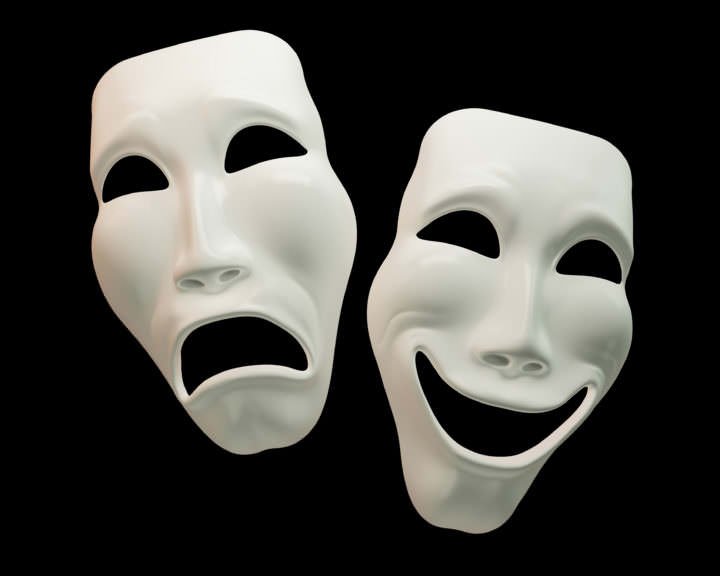
#6 WOMEN WERE NOT ALLOWED TO ACT IN ANCIENT GREEK THEATRE
In the early years, Greek tragedies had only one actor. This actor wore a costume and a mask and would impersonate the gods. This is perhaps the closest link between the plays and the religious rituals from which they originated. Thespis in 520 BC created the concept of the chorus, and the actor would speak to the leader of the chorus. The chorus would only sing and dance, and wouldn’t speak. The actor then started changing costumes in the skene, allowing the play to be divided into different episodes. After some years, the number of actors allowed in the play was increased to three. It was only by 5th century BC that more actors were allowed in the play. All the parts in Greek theatre plays were played by men. Women did not act in Ancient Greek plays and it is still disputed as to whether they even came to watch the plays.
#7 THE CHORUS WAS AN INTEGRAL PART OF EARLY GREEK PLAYS
The chorus was a unique feature of Greek theatre plays and, in the initial years, it was an essential part of the play. The members of the chorus had ostentatious costumes designed to attract attention. The chorus could represent almost anything; from giant bees to knights to kitchen utensils. However, it often played a group character. It could also provide comments, summaries and information that wasn’t part of the dialogue. In some cases, the chorus members even articulated the secret thoughts and fears of the characters. The chorus either spoke in unison or sang. It was an important technique used when there were just one to three actors on the Greek theatre stage. However, by the 5th century BC, the importance of the chorus began to decline and it was no longer an integral part of the main drama.
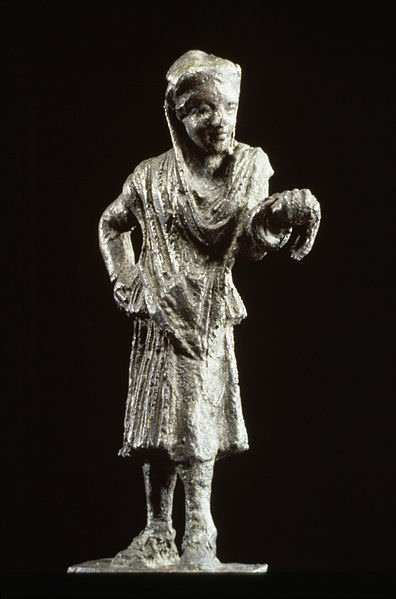
#8 DEATHS COULDN’T BE DEPICTED ON STAGE IN ANCIENT GREEK THEATRE
Greek tragedies often dealt with moral questions and tragic no-win dilemmas. The plots of Greek tragedies were almost always inspired by Greek mythology, which was a part of the Greek religion. There were certain peculiar characteristics in Greek tragedy. For instance, there were certain restrictions when it came to depictions of death and violence. Violence was completely prohibited on stage. Moreover, a character always died behind the scene in the skene and only his voice could be heard. This was because killing in front of the audience was regarded inappropriate. Also, in the early years, poets were prohibited to use their plays to make statements on the politics of the times. However, with time, theatre was used to voice ideas and problems from the democratic, political and cultural life in ancient Greece. Playwrights often used myths as a metaphor to raise concerns about the present.

#9 GREEK COMEDY WAS DIVIDED INTO FOUR PARTS
Ancient Greek comedy was divided into four parts. The first part of was called parados, in which the chorus, which comprised of as many as 24 performers, came in and sang and danced. The second part was known as the agon. It usually involved a verbal duel between the main actors. Scenes changed quickly, the plot often had fantastical elements and there was scope for improvisation. In the third part, the parabasis, the chorus addressed the audience. The final part of the play was the exodos where the chorus usually gave an electrifying song and dance performance. Being less formal in nature, comic plays in ancient Greece allowed poets to comment on current events in a satirical manner.
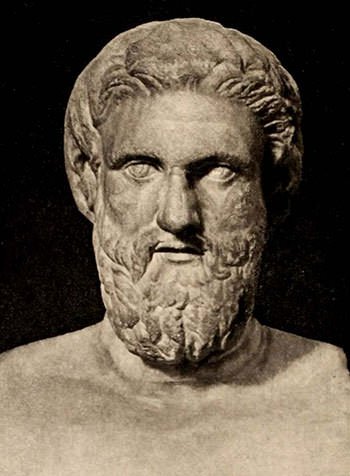
#10 AESCHYLUS AND ARISTOPHANES ARE KNOWN AS FATHERS OF GREEK TRAGEDY AND COMEDY
Aeschylus, Sophocles and Euripides are the three ancient Greek tragedians whose significant number of plays have survived. Consequently they are the three most acclaimed Greek tragedians. Aeschylus is today renowned as “The Father of Tragedy”. It was through his works that the knowledge of tragedy genre began. Moreover, he is the first known dramatist to present plays as a trilogy. Sophocles is regarded as the most celebrated playwright of his time and his play Oedipus Rex is rated by many scholars as the masterpiece of ancient Greek tragedy. Euripides, regarded as “the most tragic of poets”, became the most popular of the three due to which more of his plays survive than those of Aeschylus and Sophocles combined. Comedy in ancient Greece is divided into three periods: Old Comedy, Middle Comedy and New Comedy. While Middle Comedy is mostly lost, Aristophanes and Menander are the best known representatives of Old and New Comedy respectively. Eleven plays of Aristophanes survive and he is often called “The Father of Comedy”.

